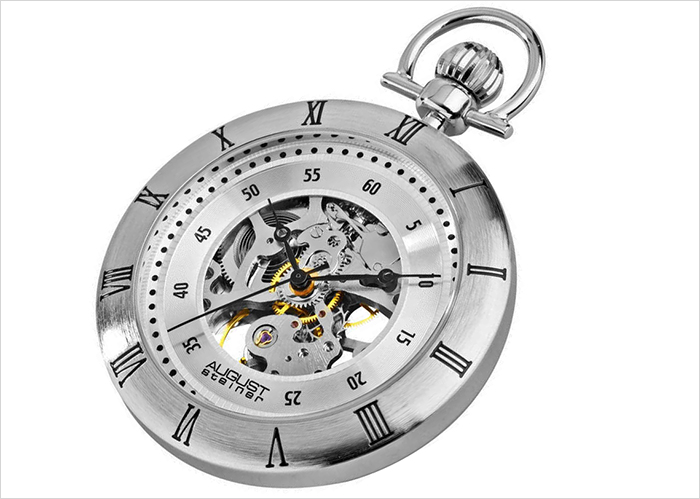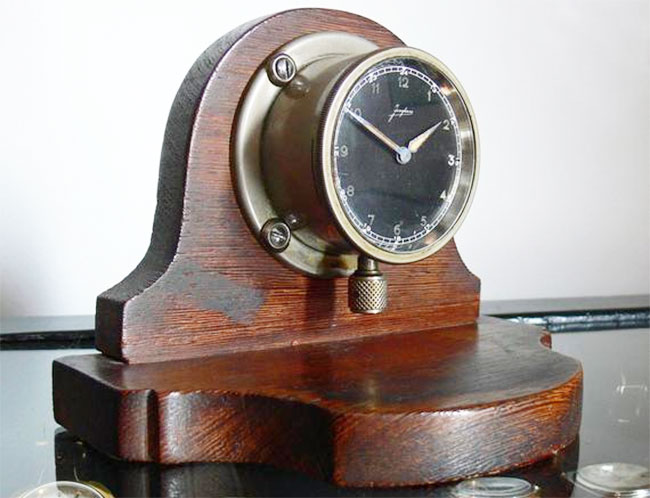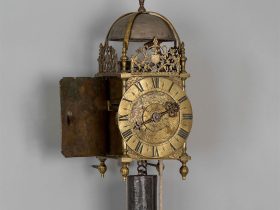Are you interested in buying an antique German clock? Are you the owner of an old Deutsche clock and wants to learn more about this classic timepiece?
German clock-makers had invented many types of famous clocks that contributed to the history of the clock making industry.
German clock making history
Germany has a fine history of making clocks that goes back to a few centuries. The Southern German states of Bavaria and Baden – Württemberg became the center for European clock making since the Renaissance period.
15th century marked the advent of spring-driven clocks, allowing the production of portable time tellers. The first portable timepiece was invented by Peter Henlein. He also invented the watch mainspring in the town of Nuremburg, Germany.
By the end of the 16th century, Augsburg, Germany became the center for making elaborate brass-cased Deutsche clocks, and the early forms of novelty clocks.
At that time, early German timepiece only had a singe clock hand to indicate time, represented by roman numerals from 1 – 12.
In 1730, Franz Ketterer made the first cuckoo clock in Black Forest, Germany. His invention inspired the clock making skills of famous 18th century coo coo clockmakers such as Herr, Hettich, and Kammerer.
The German clock making industry suffered during World War I but started recovering after the 1920’s. They used softer materials at first, which is perhaps in the effort to save money.
After the World War II, Dutch antique clocks evolved into a shadow of their former quality. They had superb engineering but the clock materials were substandard.
Famous early German clockmakers and manufacturers
Early German clockmakers were mostly from families of acknowledged goldsmiths, silversmiths, and jewelers. As a result, German antique clocks of this period were well well-crafted, had very ornate metal cases and most of them had engraved exotic scenes of animals.
Early German manufacturers always seem to be changing their engineering, unlike the French clockmakers who standardized their mechanisms.
Peter Henlein (1480 – 1542) – a Nuremberg locksmith and watchmaker. He is considered as the inventor of the first portable timepiece, the watch, and the watch mainspring.
He built a small, drum-shaped Taschenuhr (portable watch) during his stay in the asylum from 1504 – 1508, it could run for 40 hours on a single winding.
Franz Anton Ketterer (1676 -1749) – German clock-maker and is one of the founding fathers of the Black Forest clock making industry. Ketterer made the first German coo coo clock.
Gustav Becker (1819 – 1885) – commenced clock making in 1850. Becker won the Medaille d’or in 1852 Silesia Trade Exposition for his clock designs.
He incorporated that first medal and his initials G.B. onto his timepieces which became his trademark.
Winterhalder and Hoffmeier – based in Black Forest Germany, the company is a reputed manufacturer of fine Victorian clocks and grandfather clocks. Their timepieces are marked with the insignia “W & H Sch.
The company was founded by German clockmaker Nicholaus Winterhaler and was shortly joined by Anton Hoffmeier around 1850.
Gordian Hettich – Gordian Hettich Und Sohne Black Forest clockmaking factory. Founded by Hermann Hettich in the early 1880’s, the oldest son of Gordian Hettich by which the company is named after.
Their clocks are respected for superior workmanship; they also cater a clock-packaging business for shipping timepieces to other parts of Germany and the continent.
Anton Harder – German clockmaker who invented the 400-day clock or the anniversary clock around 1880.
Joseph Kieninger – establish The Kieninger Clock Company in 1912. Located in Aldingen, Germany, It is the world’s oldest existing clock manufacturer of mechanical clock movements.
Hubert Herr – maker of quality Black Forest clocks since the early 19th century. Hubert Herr cuckoo clocks are world renowned for its utmost quality and elegant designs.
Helmut Kammerer – founded The Hekas Company in 1938. Hekas is famous for producing world class quality Black Forest cuckoo clocks.
Franz Hermle – founded the Hermle Company in 1922. It is based in the Black Forest region of Germany and has been manufacturing clocks and clock movements for almost a hundred years.
Hermle Company is one of the world’s leading producers of quality wall and mantel clocks.
Junghans Uhren GmbH – Germany’s largest clocks and watch manufacturer. In 1950’s it collaborated with industrial designer Max Bill and created a series of small wall clocks for designed for home and office use.
In 19th – 20th century, Junghans focused on making pocketwatches and wrist watches.
Types of Early German clocks
German clocks or Deutsche clocks are well known for their high – precision movements, dependable mechanisms, and straightforward constructions.
Antique German grandfather clocks
German grandfather clocks stand more than 6 feet tall and are made of solid wood. Antique German tall case clocks are known as Harfen-Gong and are sought after by clock collectors.
German clock-makers were very particular on the parts and movements of their long case clocks. They were manufactured in high quality resulting to accurate and long lasting time tellers.
The finest grandfather clocks produced today are actually based upon the German’s technology of clock movements.
Antique German wall clocks
Most German timepieces are wall clocks. Early German clockmakers seemed to prefer making clocks with ornate carved cases and open pendulums.
Antique German wall clocks dates as far back in the 17th century and were manufactured using the latest clock making technology headed by master clockmaker Franze Hermle.
German-made wall clocks are mostly driven by quartz and mechanical movements.
Antique German cuckoo clocks
German cuckoo clocks were a pioneering invention in the world of clock making.
Franz Ketterer made the first cuckoo clock around 1740 in Black Forest Germany. Antique German cuckoo clocks are characterized by the cuckoo bird that emerges from its house to announce the hour.
In 1850, Friedrich Eisonlohr designed a coo coo clock that looked like a little house. This style became known as Bahnhäusle and was inspired by look out buildings constructed by railroad workers. This valuable antique German cuckoo clock design is still one of the most used designs today.
Because coo coo clocks are largely made in Black Forest, the place has been considered synonymous to cuckoo clocks.
Old German mantel clocks
Early German mantle clocks dates back in the 16th century. German antique mantel clocks were 8-day timepieces which needs wounding in a weekly basis and do not require much maintenance.
Antique German 400-day clocks
400-day clocks were first made in Germany around the middle of the 19th century by German clock-maker Anton Harder.
A German antique 400-day clock is driven by a torsion pendulum that rotates slowly clockwise and counter-clockwise instead of swinging right and left.
Because of its slow oscillation, it can run for over a year on a single winding, hence it is also called anniversary clocks.
Antique German monstrance clocks
The monstrance clock was a popular form of antique German timepiece that depicts religious significance and was made in Augsburg, Germany during the Renaissance period.
Also called mirror clocks, crucifix clocks, tabernacle clocks, and church clocks, German monstrance clocks take the form of a cross and were made by the most complex Deutsche clockmakers.
German antique monstrance clock was actually a vessel of gold or silver where the sacred host (represents the Body of Christ as believed by Christians) was placed in the center of the cross for adoration.
Elaborate designs of mirror clocks featured sacred human figures and other religious symbols. Old German tabernacle clocks remained popular until the 18th century.
Vienna regulator clocks
Vienna regulator clocks were crafted around 1790 in Austria (a German-speaking country) and were used all the way to 1910. They were made from fine woods and considered very durable mechanical device for time keeping.
This is another type of antique German clock which can be placed in a wall. Antique German Vienna regulator clocks were crafted out of fine hardwood and had very precise mechanism.
German moving clocks
These are antique Deutsche clocks that move across the table every hour. Two of its most famous designs were the ship on wheels and horse drawn carriage that were placed in the center of the table and move during dinner in order to entertain the hosts.










Leave a Reply